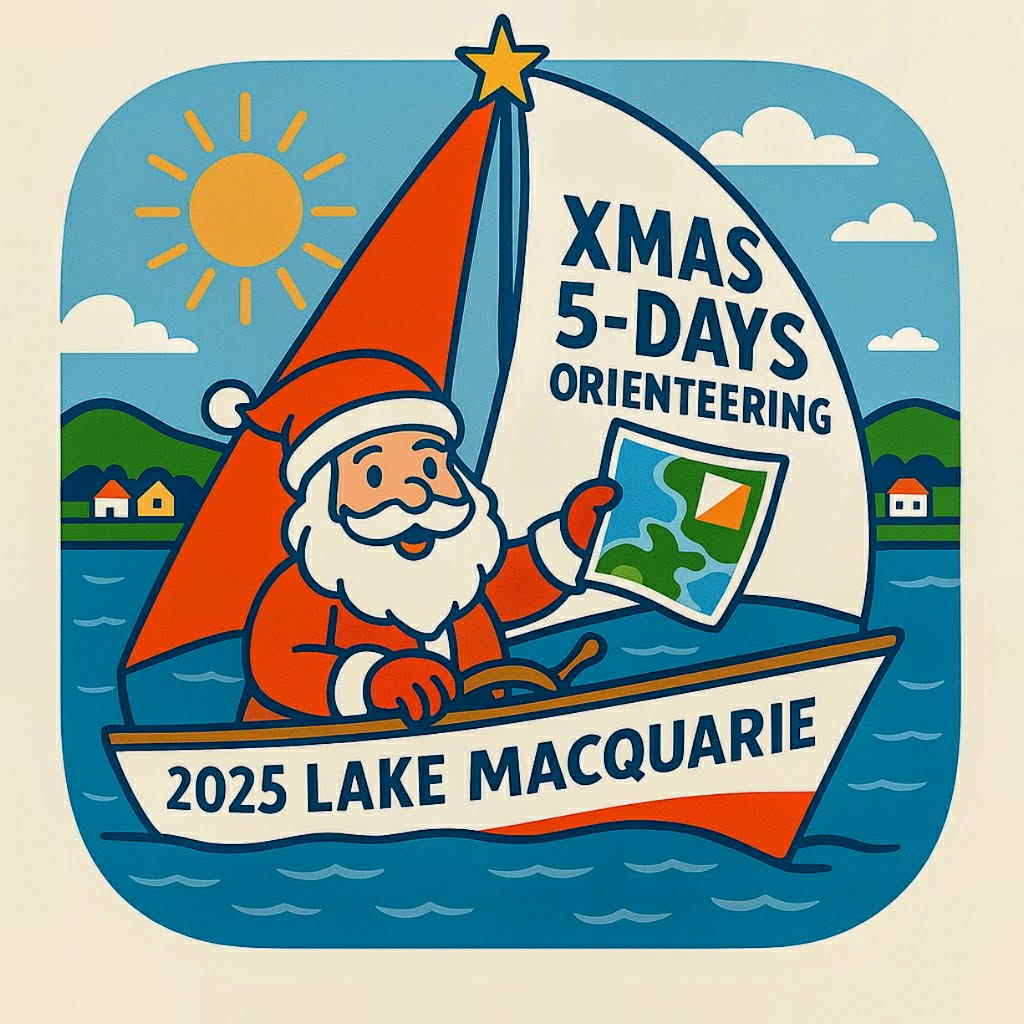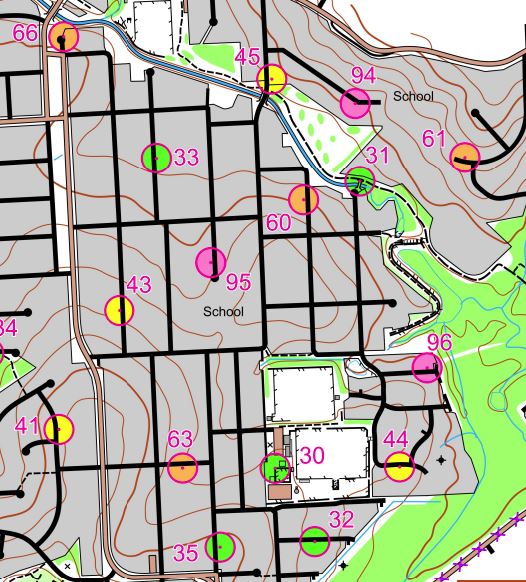As the saying goes “many hands make light work” and this is true for Street-O as well. The most obvious task that we need people to volunteer for is to set a course. Don’t worry if you have never set a course before, there will be people to help at every stage of the process, and of course, without courses there is no Street-O so your efforts will be greatly appreciated. Either talk to a Street-O Coordinator directly (most easily done at an event) or use the Street-O email address if you can help in this way.
This email address is being protected from spambots. You need JavaScript enabled to view it.
If you feel that there is some other job that you can do, either at one particular event or on a regular basis, then that would be greatly appreciated too. Again talk to a Street-O Coordinator directly or use the Street-O email address
This email address is being protected from spambots. You need JavaScript enabled to view it.
1. The Course
The course is a 45 minute score course, (i.e competitors visit as many controls as they can, in any order, in 45 minutes).
2. Preparation Time
Competitors will receive their map 2 minutes before their start time.
3. Late Penalties
a. Minus 30 points for every minute or part thereof up to 5 minutes late.
b. Minus 30 points for every 30 seconds or part thereof from 5 minutes late onward, down to a score of 50 points or until 10 minutes late.
c. If more than 10 minutes late, the score will be 50 points.
4. Early Bonuses
If all controls have been visited then plus 20 points for every full minute early.
5. Technology Failures
It is the competitor’s responsibility to make sure that their technology is charged and working.
6. Private Property
All private property and any other areas so marked on the map are out of bounds. Competitors found not observing this rule can be disqualified. (And remember that competitor’s tracks can easily be viewed via MapRun!)
7. Duty of Care
a. Before going out on the course all competitors must report to the Registration Desk (so that we know who is out on the course).
b. On completing the course all competitors must again report to the Registration Desk (so that search parties are not sent out!)
c. In entering an orienteering event, competitors recognise that the activity has certain inherent risks due to its conduct in the urban and natural environments. Included in these risks are injury due to rough terrain and obstacles and the effects of heat, cold and exhaustion. Competitors are also aware that there is no personal accident insurance on their participation in the sport and that they take part at their own risk. The Full Policy is available here.
8. Individual Event Scoring
Placings are determined by (in order):
a. The largest number of points scored.
b. The least number of penalties incurred.
c. The least time taken.
9. Categories
a. Individual competitors (over the age of 14) will compete in one of the Men or Women categories.
b. Groups of two or more (one of whom has to be over the age of 14) must compete in the Team category. Teams are to stay together (i.e. within sight of each other) at all times while competing. In terms of the overall Series, teams with at least two members in common will be regarded as the same team.
10. Awards and Competitions
a. The Totally Committed (TC) Award (or the Toblerone Chocolate Award)
For attending, either as a participant or a course setter, all 17 events in the season.
b. The General Classification (GC) Competiton
For the competitor with the highest series total.
The series total is determined by summing the competitor’s ten best results over the season. (Note: No points are given for course setting.)
In calculating the series total, the results from each event are normalised via the formula
![]()
c. The Efficiency Index (EI) Competition
For the competitor with the highest series Efficiency Index.
At an individual event a competitor’s EI is the ratio of points scored to distance travelled.
The series EI is determined by summing the competitor’s ten best results over the season. In calculating the series EI, the EI results from each event are normalised, (via a formula similar to that used for the GC Competition).
d. The InZone (IZ) Competition
For the competitor with the highest series InZone score.
At an individual event a competitor’s IZ score is the number of points scored before a control outside the InZone is visited. However, if all controls in the InZone have been visited then subsequent controls visited outside the InZone will be contribute to the IZ score.
The series IZ is determined by summing the competitor’s ten best results over the season. In calculating the series IZ score, the IZ results from each event are normalised, (via a formula similar to that used for the GC Competition).
e. The Line Score (LS) Competition
For the competitor with the highest Line Score score.
At an individual event a competitor’s LS score is the number of points scored given that the first 6 controls that the competitor visited are the 6 controls indicated on the map and that they are visited in the given order, i.e. given that the competitor completes the 6-control “line” course first.
The series LS is determined by summing the competitor’s ten best results over the season. In calculating the series LS score, the LS results from each event are normalised, (as a percentage of the best score).
f. The 9M Competition
For the competitor with the highest series 9M score.
At an individual event a competitor’s 9M score is the number of points scored given that their kilometre pace is greater than 9 minutes per kilometre. If a competitor’s pace is less than 9 min/km then the competitor’s 9M score is 0.
The series 9M is determined by summing the competitor’s ten best results over the season. In calculating the series 9M score, the 9M results from each event are normalised, (as a percentage of the best score).
Anyone can come and have a go at Street-O.
Things are kept pretty simple with most participants competing as individuals in either the Men's or Women's categories, (there are no age categories). Also, there is a Teams category which is great for beginners, families or for those who just prefer to go out with friends.
Since Street-O events take place in an urban environment children under the age of 15 will need to be accompanied someone 15 or older at all times, (and hence be in the Teams category).
If you find you like Street-O and want to compete regularly you should consider joining Newcastle Orienteering Club since entry is cheaper for members.
The aim of Street Orienteering is to collect as many points as you can in 45 minutes by running/jogging/walking around the area covered by the map and visiting “controls”.
Controls are worth either 30, 40, 60 or 90 points. If you are late back (i.e. stay out longer than 45 minutes) you lose 30 points per minute (or part thereof) that you are late.
Two minutes before your start time you are given your map. You use this time to think about which controls you might visit and how you will get to each of them.
The map is a specially prepared street orienteering map. It has the streets, laneways, parks etc. on it but no street names. So, you have to keep track of where you are. It also has contours marked on it so that you can tell which parts of the area are hilly and which are flat. The maps are drawn at a scale of 1:10000 (i.e. 1cm=100m) and fit on one A4 page. (For a list of all the symbols used on our Street-O maps see here.)
The location of each control is marked on the map by a circle and given a label which is a two digit number. The number of points that a control is worth is given by rounding down the label number to the nearest multiple of 10, (e.g. control 35 is worth 30 points and control 63 is worth 60 points). Also, for clarity, 30 point controls are coloured green, 40 point controls yellow, 60 point controls orange and 90 point controls pink. On the back of the map is a set of “control descriptions”. These descriptions tell what you should see at the control site. For example, the control description for Control 35 might be, “Telegraph Pole JU14077”. Note that you can download the control descriptions from the Newcastle Orienteering club website and print them out if you prefer to have them in a wrist-control-descriptions-holder (so that you don’t have to keep turning the map over to look at them).
In order to determine which controls you have visited we use a smartphone app called MapRun. Basically, you start the app and carry your phone (as well as your map) with you as you go. When you get to a control site your app will beep and put up on the screen the control number you have located. If you have a suitable Garmin watch you can link that with your phone before the event and then go out with just your watch. Click here for more details about using the MapRun app.
There is an event each Wednesday afternoon from October through February. The location of the event is different each week and through the course of the season there will be events in the suburbs of Newcastle, Lake Macquarie and Maitland. You can compete just once, do the entire series (17 events) or anywhere in between. The Series Calendar usually comes out in mid September.
Start times are available at 2-minute intervals between 5pm and 6:30pm. Three competitors can start at the same time. Being mindful that at most three competitors can start at the one time, you are free to choose your start time.







